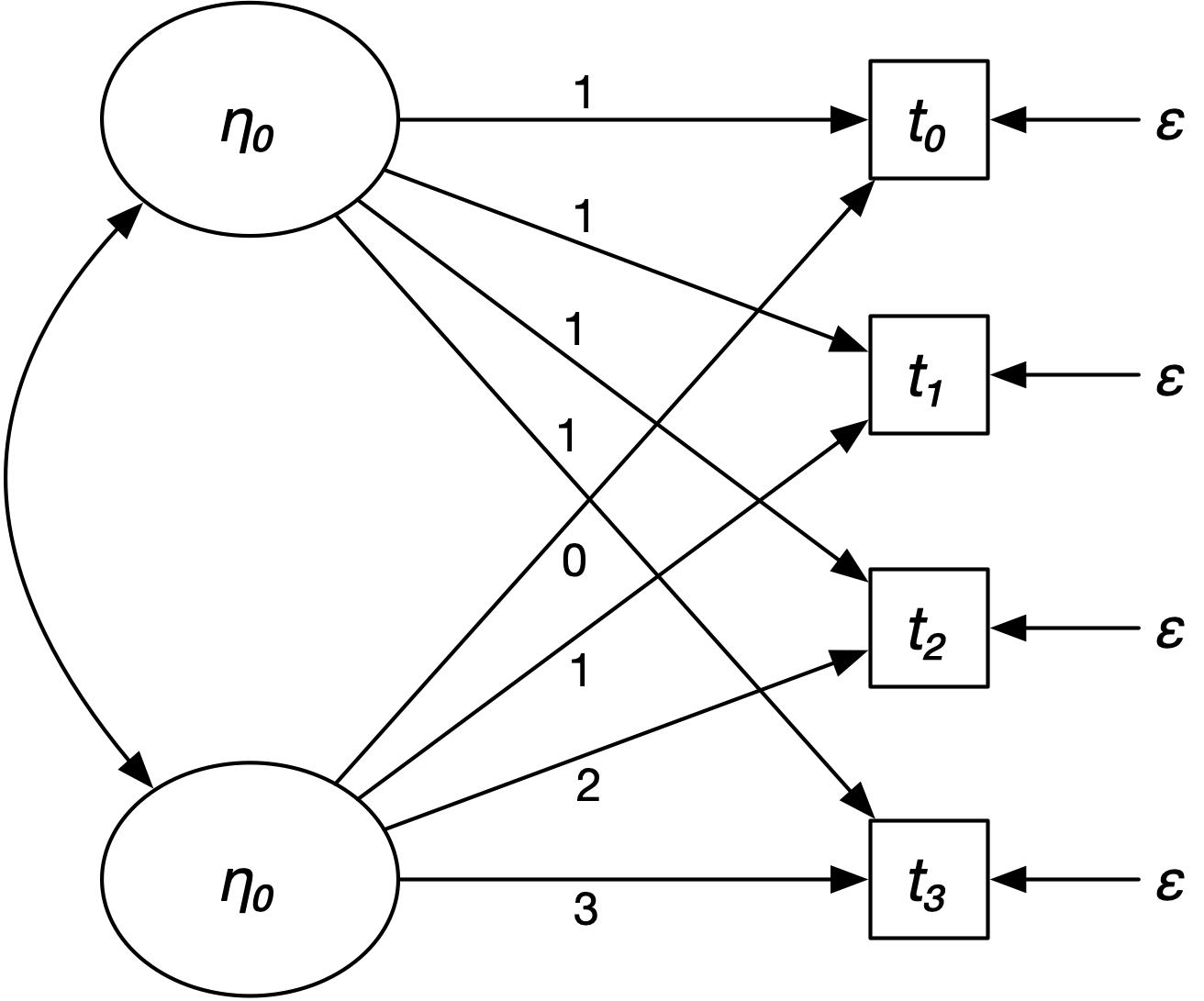Nick Chaiyachakorn

Figure: path diagram of an SEM latent growth model, for 4 time points, with subject/case-varying constant and linear coefficient.
When I grow up, I want to be a statistical consultant for applied social psychologists doing real world stuff. I love taking all sorts of statistics methods classes – SEM, multilevel modelling, survival analysis, psychometrics, cluster models with correlated covariances, etc...
Open-Source Software on GitHub
I've been getting back into coding; I do small projects that involve numerics. Currently, I only have:
color-detection-diagnostic.c Mini-utility exercising multiple methods to determine terminal colour capabilites on *nix platforms - environment variables, 'ncurses', xterm-style Primary/Secondary Device Attribute queries, true-colour roundtripping, a visual demo, and process name detection.
libfixmathmatrix A header-only (+ optional source file) amalgamation of a 32-bit fixed-point numerics and linear algebra library.
DazzlerGFX, heavily WIP/playground Mini vMac, modified to add a virtual "PDS expansion card" to the Macintosh SE platform. It currently has a general-purpose framework with (a) a whopping ~1 MB of shared on-device memory that can be accessed without any latency, and (b) the ability to asynchronously execute 7 commands at once. Just no actual functionality to emulate yet! You could probably even do DMA copies in one (emulated) cycle.
Writeups
I learn things by writing them up. Here are some of the things I've been learning recently.
Caveat emptor: I'm not good enough at math to do derivations from scratch, so heavily rely on ChatGPT to give me rigorous mathematical derivations and arguments. For full transparency, I attach the prompts I used at the end.
(Jul 14 2025) "Lab notebook": (Unsuccessful) attempt to convert graphics to ASCII art by subdivision into tiles and glyph matching
(Apr 2 2025) Reminder to myself about the geometric intuition behind the OLS estimator + associated standard error.